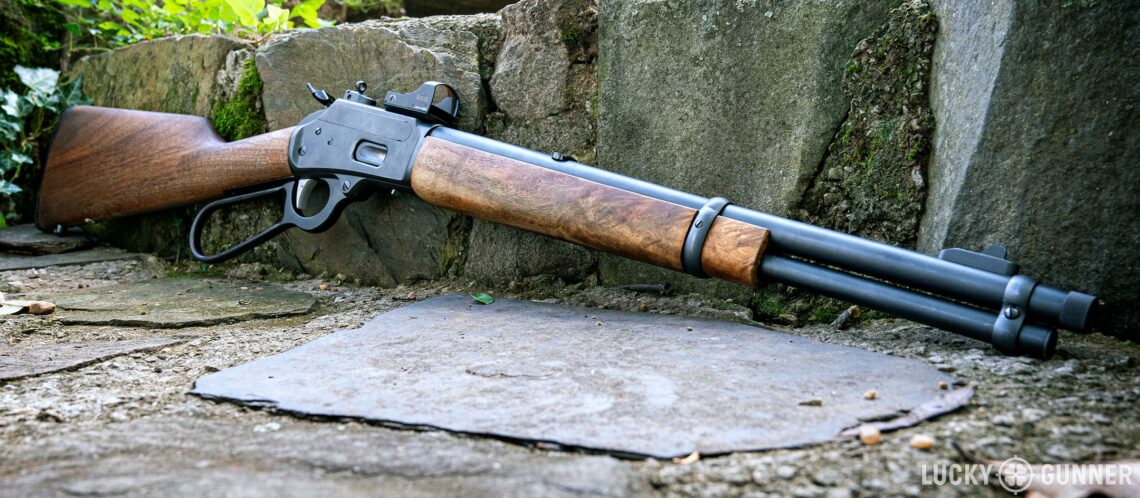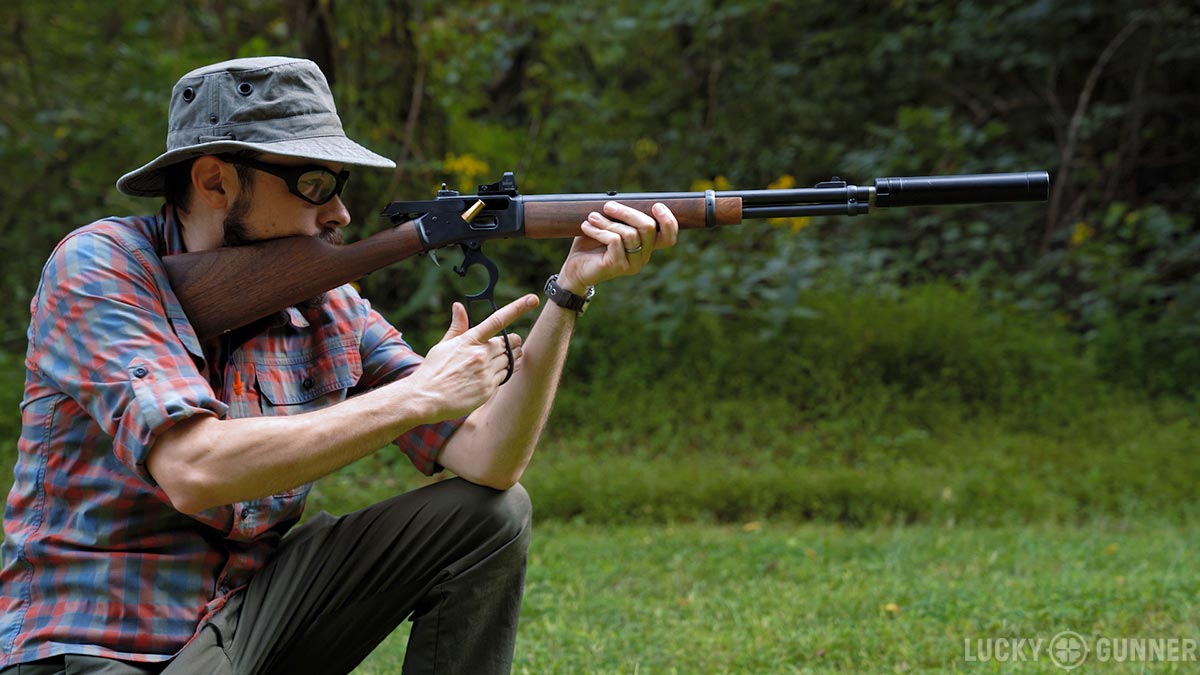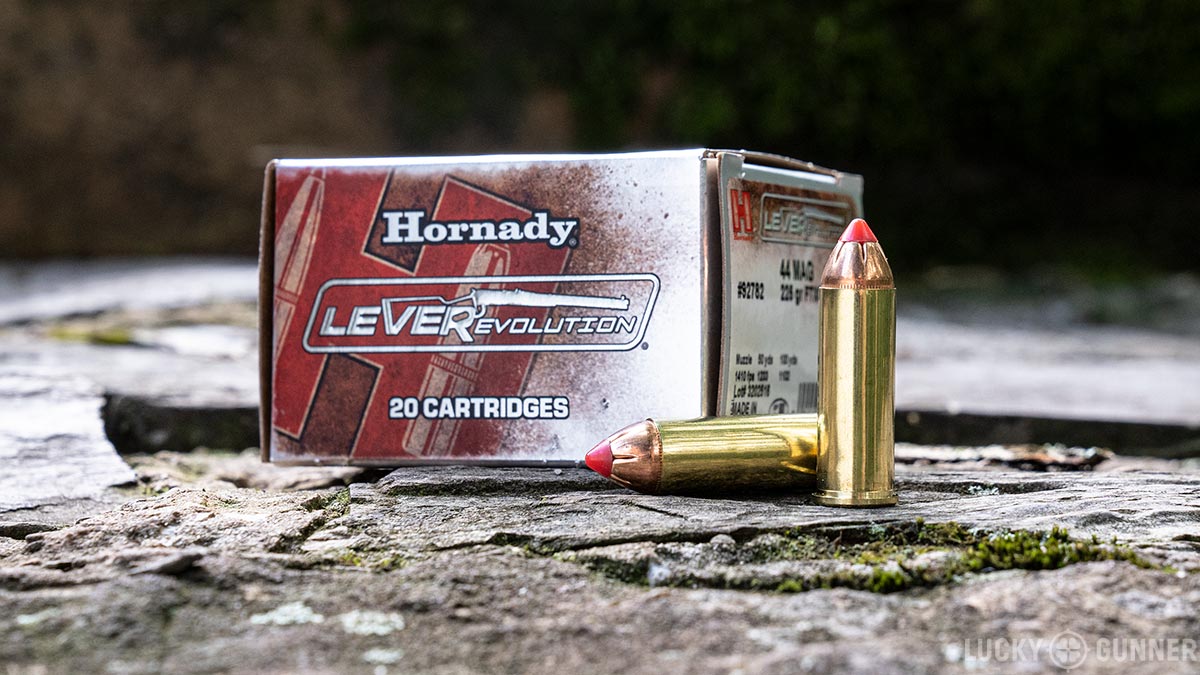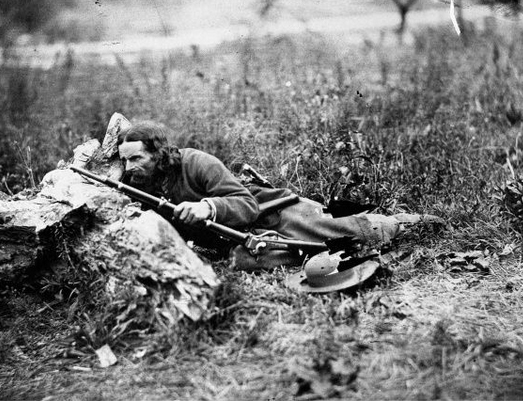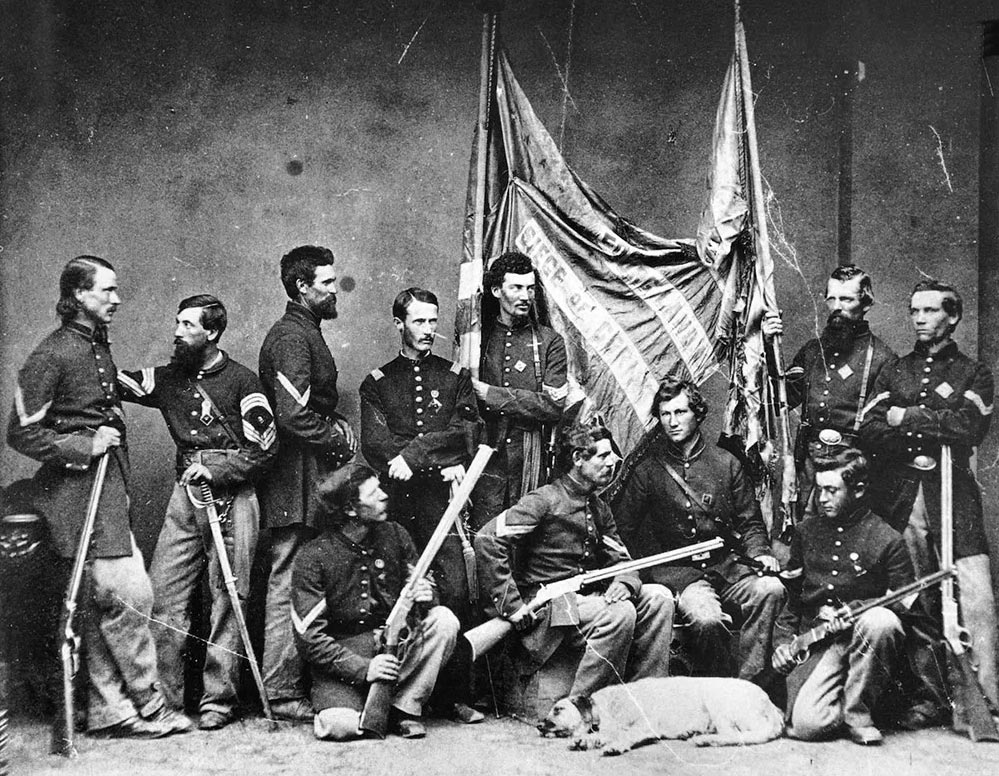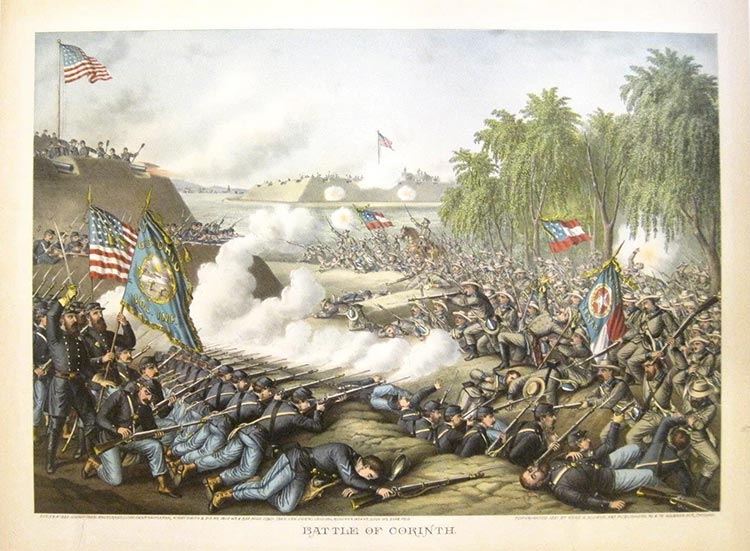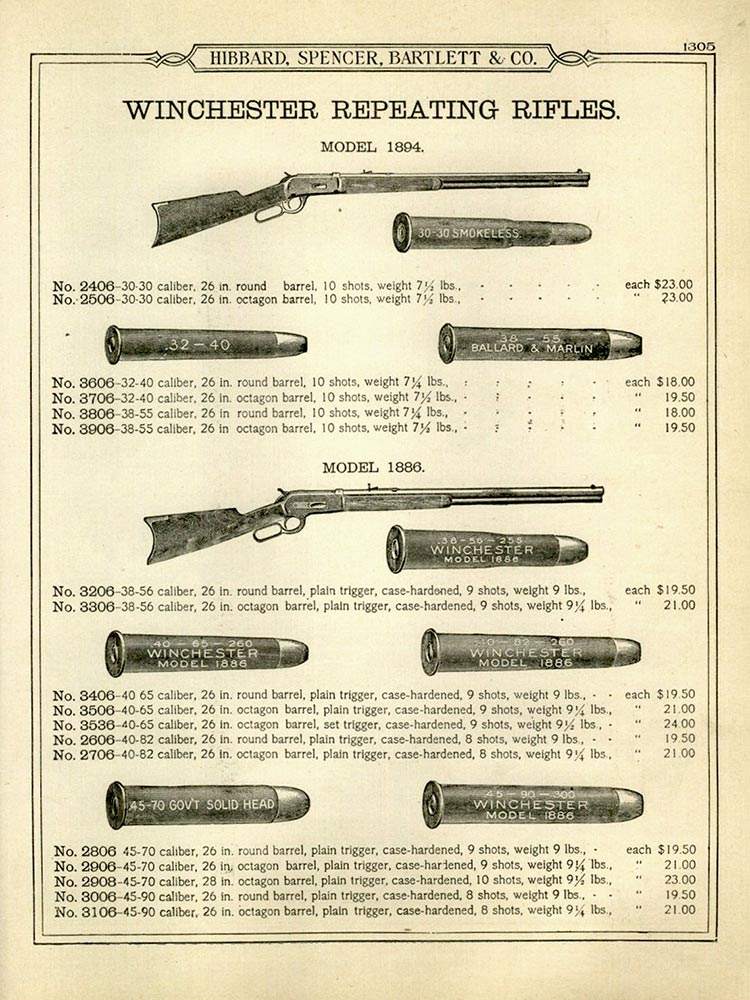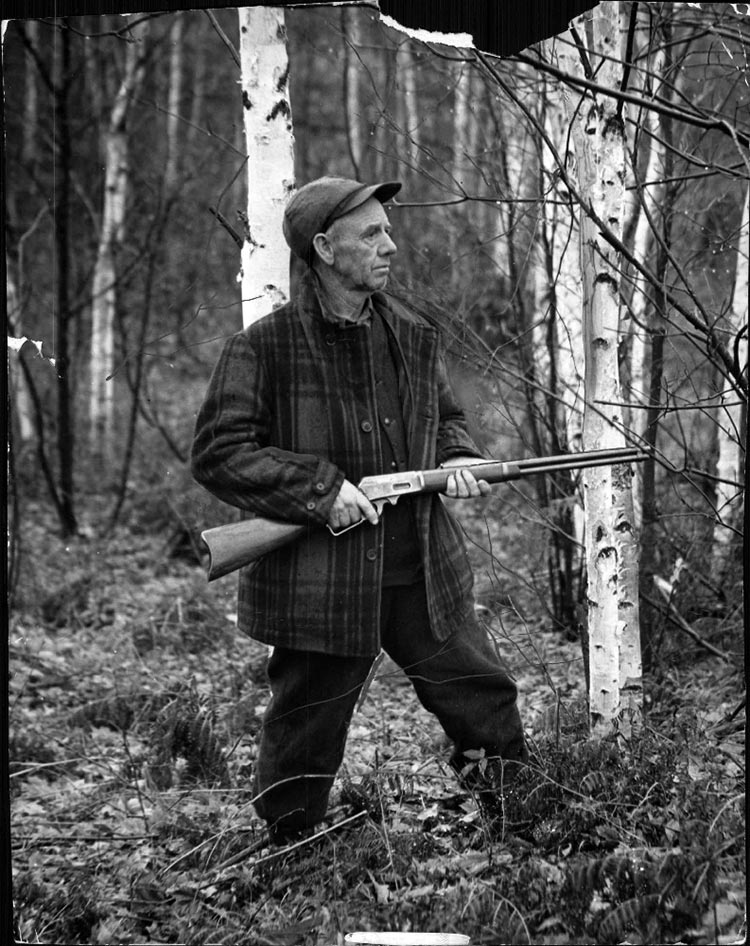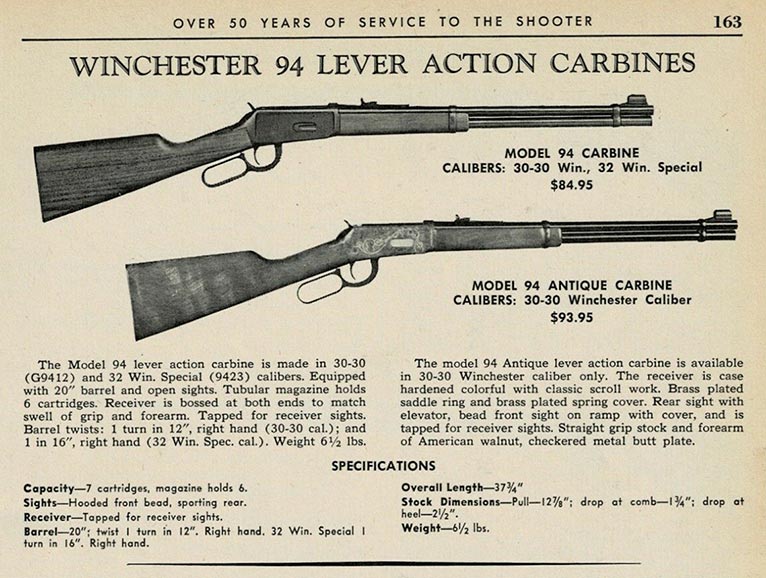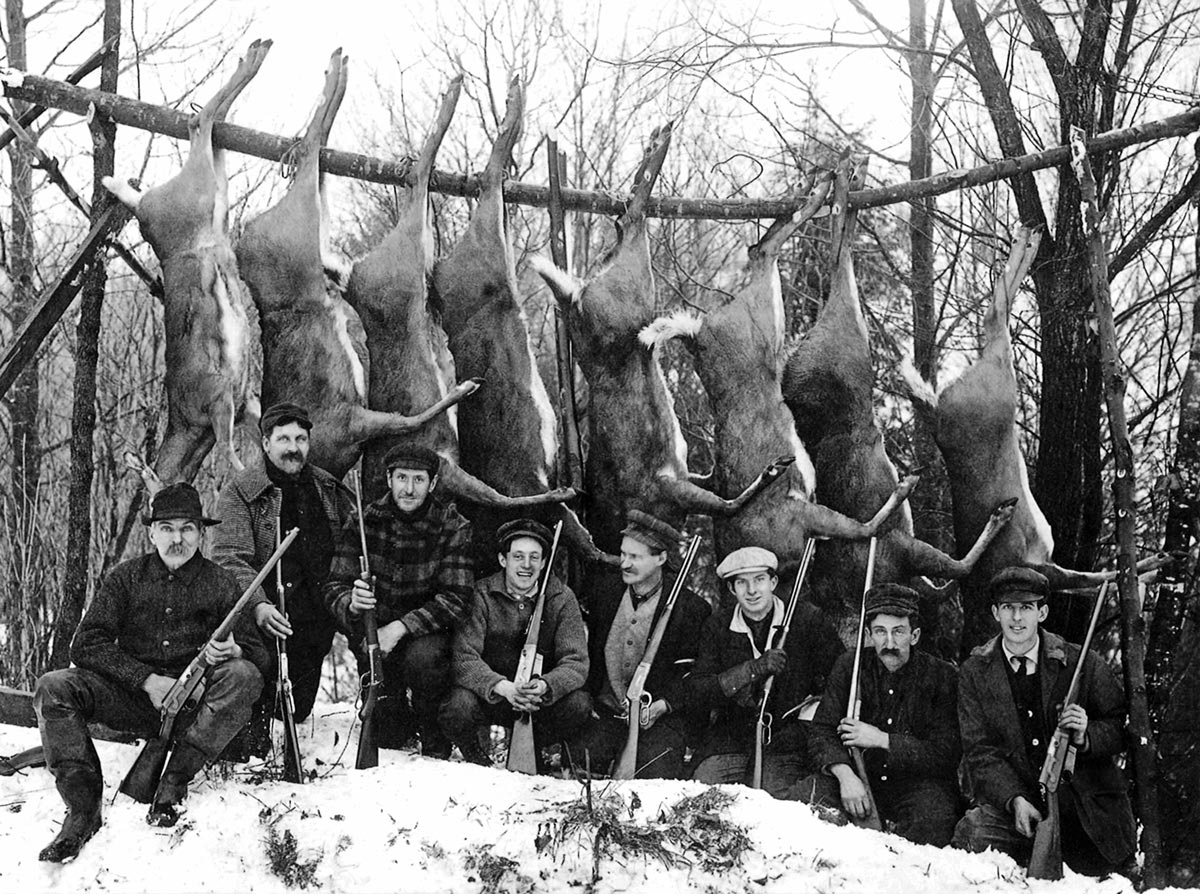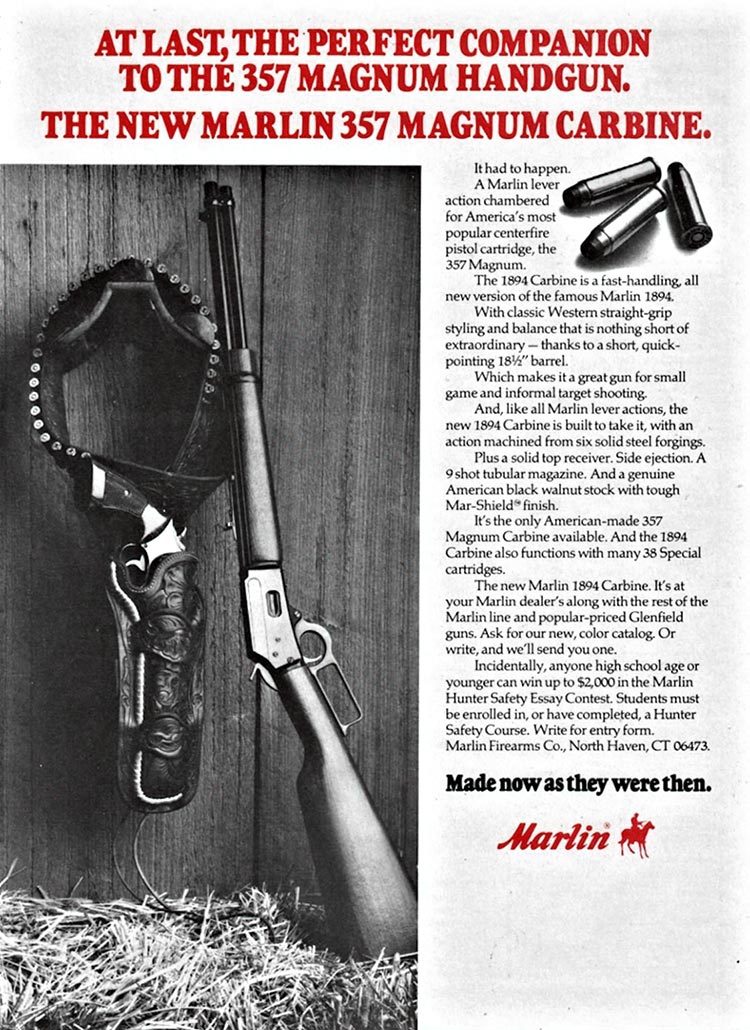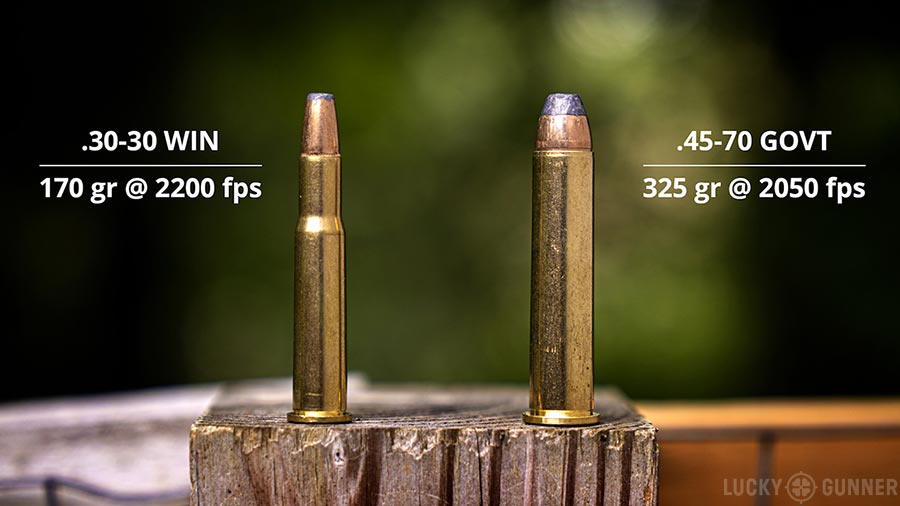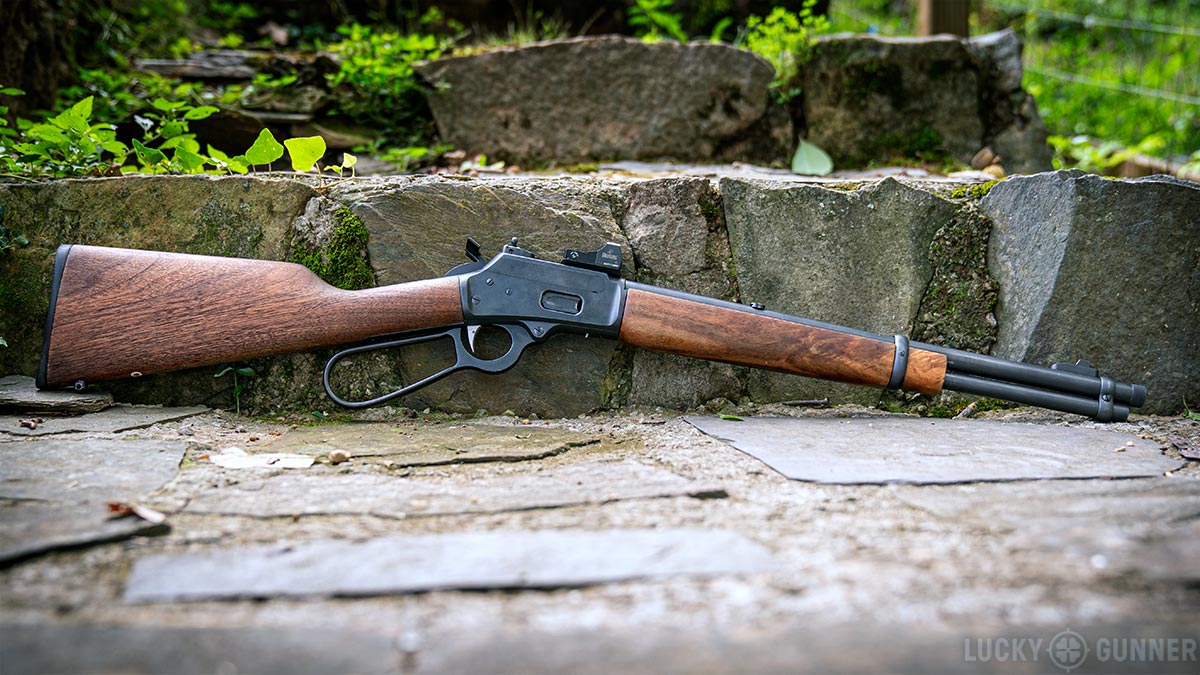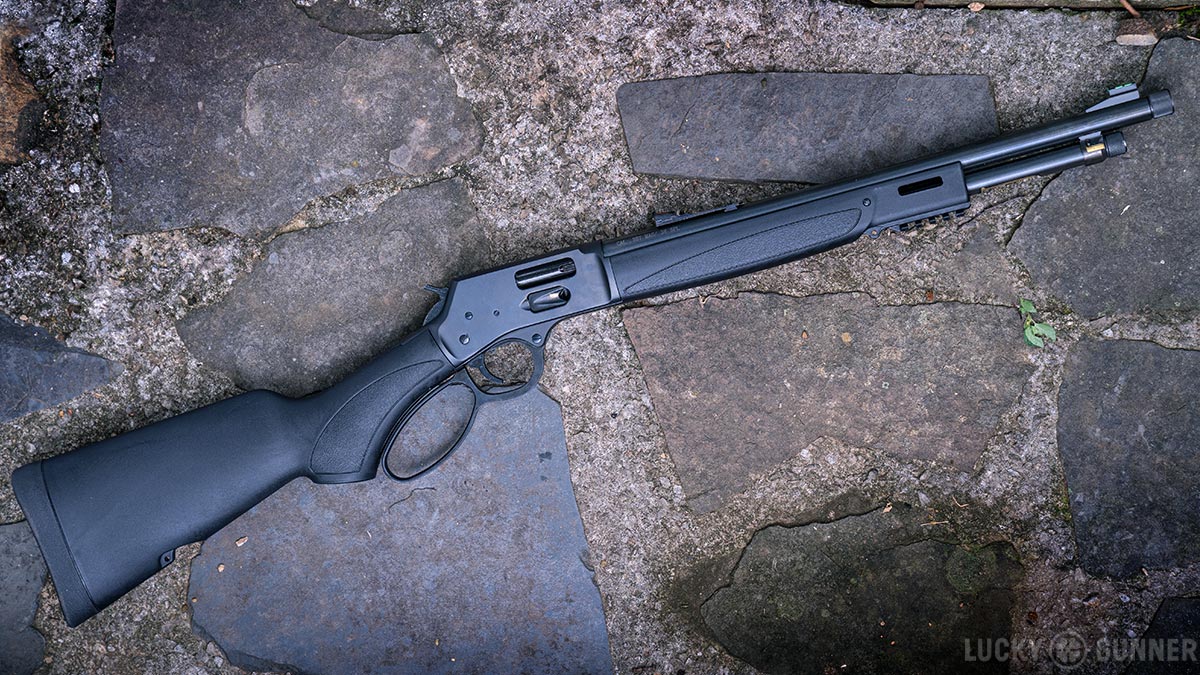It’s the launch of our new video series all about lever actions! Why lever actions? Because everybody loves lever actions and today we’re going to talk about why. We’re looking at each chapter in the history of the lever action and why people have continued to choose these 19th century relics over the other available options.
Our Next Series: Lever Action Rifles
Hey everybody, Chris Baker here from LuckyGunner.com. One of my favorite guns ever is this .357 Magnum Marlin 1894 lever action. You might recognize this gun if you’ve been following us for a while. I did a quick video about it five years ago this month and it’s made a couple of appearances since then. I had some work done to it by Grizzly Custom Guns and I’ve made a couple of my own modifications
It’s super light and handy. The action is smooth. With subsonic .38s and a suppressor, it makes almost no sound at all. Usually, it’s the first gun I’ll grab if I’m taking a new shooter out to the range. I’ve had more than one friend try to call first dibs on the Marlin if I ever decide to sell it. It’s just a ton of fun to shoot and everybody seems to enjoy it.
I’m not the only one to have rediscovered the joys of the lever action in the last few years. There have definitely been some trends in that direction lately, especially with what you might call “modernized” lever-actions. And that is going to be the topic of our next big Lucky Gunner video series.
You guys know how these work by now. There’s no predetermined number of installments or end date for the series. I’ve got some guns here, a box of accessories and a list of topics I want to cover. So on and off for the next several weeks or months, or however long it takes, I’ll be covering lever action rifles. I’m going to be talking about the hardware, ballistics, techniques, and history, all with an emphasis on using 21st century technology to get the most out of these 19th century firearm designs.
Why Lever Actions?
Today I want to talk about why. Why do we still like lever actions? They date back to the Civil War era, but we’re still making new ones. And I don’t just mean faithful reproductions of the originals for people who like to dress up like cowboys. The guts of today’s lever actions might be based on old designs, but now they are offered in configurations that are anything but traditional.
New ammunition continues to be developed specifically for lever actions. Every year, there are new accessories available like forends and optic mounts that can make your lever action as customizable as any AR-15. There are custom shops that will perform a takedown conversion on your lever action or even re-chamber it for a modern semi-auto cartridge like 10mm. These guns should be obsolete by now, so why do we keep buying them and trying to improve them?
Let’s start with what made lever actions popular to begin with and see how that might have changed throughout history.
Lever Actions In The Civil War Era
In the early 1860s, if you saw a long gun, it was probably a muzzleloader. The rifled musket firing a conical Minié ball was considered cutting edge. But at the same time, the metallic cartridge had already been invented and the world was about to enter a 50-plus year period of massive evolution in firearms technology.
Two of the major innovations made possible by the metallic cartridge were the first practical breech loading single shot rifles and the lever action repeating rifles. Both of those came along around the same time in the 1860s.
In many respects, the first metallic cartridge breech loaders were like improved versions of the rifled muskets. The most well known are probably the Sharps and the Remington Rolling Block. They were known for being accurate and they fired large caliber bullets that were believed to be useful in combat out to 1000 yards or more.
For example, the .50-70 Government cartridge adopted by the US Army in 1866 can push a 450 grain bullet to about 1200 feet per second. That’s pretty close to the weight and velocity of a modern low recoil 12 gauge slug.
The lever action was something completely different. What really set them apart is that they sacrificed power and range for volume of fire. The first two successful lever action designs both showed up in 1860: the Spencer and the Henry. The Spencer was a good rifle but kind of a technological dead end. The Henry much more closely resembled what we think of as a lever action rifle today.
The Henry had a 16-shot magazine tube and fired the .44 Henry rimfire cartridge. That was a 200 grain bullet moving at about 1150 feet per second. That’s a little hotter than a modern .44 Special fired from a handgun, but not quite the power of a .44 Magnum.
The Spencer had a 7-shot magazine tube in the buttstock and also fired a cartridge that was relatively low powered. So essentially, these were the world’s first repeating pistol caliber carbines.
Disrupting Tradition
Even though later lever actions in the black powder era could handle bigger and faster cartridges, the major technological advancement of the repeating rifle was not immediately embraced by everybody. A lot of traditionalists maintained that if you wanted a “real” rifle, it had to be a breech loader, or even a muzzleloader.
The top military leadership at the time mostly believed in a “one shot, one kill” approach to combat. The soldier was expected to take out the enemy at great distance. If they needed to fight up close, they would go at it with bayonets. In addition to being underpowered, some believed lever actions were also too mechanically complex and fragile for field use. During the Civil War, the Ordnance Department had more or less indicated that if and when the US Army officially replaced their muzzle loader, it would be with a breech loader, not a lever action.
But the men who were actually doing the fighting certainly saw the value of lever actions. As we all know, a lot of the battles during the Civil War did not take place in wide open fields. They happened in forests and forts and other close quarters with everyone’s vision obscured by thick clouds of black powder smoke. In those conditions, it didn’t matter if your rifle had an effective range of only 150 yards. You just didn’t want to be the guy who got shot or stabbed while he was trying to reload.
Some lever actions were eventually issued to Union troops during the Civil War, but a lot of the Henrys and Spencers that made their way into combat were purchased by individual soldiers with their own money. The firepower of a handful of men with repeating rifles was highly prized by officers in the field and feared by the Confederates.
Even so, after the war, the United States Army used various single-shot breech loaders for its standard rifles until the 1890s. After that, they went to bolt actions. The US military never officially adopted a lever action for general issue.
The Rifle That Won the West
However, today, we know the lever action as “the rifle that won the West” — in particular, the Winchester lever action. The company that made the Henry was eventually renamed the Winchester Repeating Arms Company. From the late 1860s through the 1890s, they produced several lever action models that dominated the civilian rifle market.
The single action six shooter tends to be the hero in our romantic notions of that era, but I’d be willing to bet that far more living beings were shot dead with Winchesters. There were a lot of things trying to kill you back then. If you were a settler headed West, you’d be up against all kinds of dangerous animals coming after you or your livestock. There were hostile Indians. The homicide rate was through the roof. And it was no picnic back East, either. You might have to intimidate some strikebreakers or run a carpetbagger out of town.
Civilians appreciated lever actions for the same reasons the soldiers did. If you were going to need your rifle for something, the distance would probably be well under a couple hundred yards, and having quick follow-up shots could mean the difference between life and death. Shotguns and various single-shot rifles still had their place, but for most applications, a Winchester was the default choice.
Smokeless Powder Evolution
Then, near the turn of the century, smokeless powder came along. That invention paved the way for the next evolution in new rifle designs. Any one of those could have easily killed off and replaced the lever action. But somehow, they didn’t.
The first of these innovations was the bolt action rifle. Like the lever actions, these were repeating rifles, but they were much stronger and better suited for the higher pressures of the new smokeless powder cartridges. Thanks in part to GI’s being exposed to them in the first and second World Wars, bolt actions did become incredibly popular. At least for the second half of the 20th century, they were the preferred action type among hunters and recreational shooters.
But lever actions were far from forgotten. In 1895, Winchester released the smokeless .30-30 cartridge. It was a huge success and went on to become the most common lever action cartridge in the smokeless powder era. It doesn’t have the power or range of a bolt-action .30-06, but a lever action .30-30 has a few other things going for it.
First, the recoil is pretty modest. If you have to go into the woods and bring home a deer, there’s no sense in beating up your shoulder with a bolt action that’s got more power than you need. Running a lever is also a much quicker and simpler action to perform than cycling a bolt.
And then there are all the little things that you really only notice if you actually use these rifles for a while. They tend to be shorter and easier to handle in tight spaces. A lever action has smooth sides with no bolt handle protruding. It’s much easier to slide in and out of a saddle scabbard or from behind the seat in your truck. The balance point is at the front of the receiver and you can get your whole hand around it as a convenient way to carry the gun in the field. The buckhorn style iron sights on most lever actions are not the most precise, but they are quick at close range compared to a traditional peep sight or a magnified optic.
Bolt actions may have dominated the covers of all the gun magazines, but a lot of the guys who were actually getting regular use out of their rifles relied on lever action .30-30s like the Winchester 1894 and the Marlin 336.
Lever Actions vs. The Early Semi-Auto
The next threat to the lever action was the semi-automatic rifle. The Remington Model 8 was the first commercially viable semi-auto debuting in 1905. These shared a lot of the positive characteristics of the lever actions. They were relatively compact and handy. They were chambered for moderately powerful cartridges that were in the same ballpark as the .30-30. Of course, being semi-automatic, you could get multiple rounds on target even faster than a lever action.
But in the end, Remington’s semi-auto was just too expensive, and maybe too finicky, to supplant the popularity of lever actions. The Model 8 was modestly successful and later became the Model 81, produced until 1950. The combined production run of both rifles was well under 200,000 units. By contrast, Winchester presented their 2 millionth Model 1894 to President Eisenhower in 1953.
After World War II, some of the shooters and hunters who would have otherwise chosen a lever action might have opted instead for an inexpensive surplus M1 Garand or M1 Carbine. But I think a lot of gun owners from that period didn’t really feel like they had any need for a semi-auto. After World War II, gun culture was all about hunting and maybe collecting.
Any shooter can run a lever action pretty quickly. The rate of fire is a lot closer to a semi-auto than a single shot breech loader. For the average hunter, there’s not much advantage to giving up a lever action for a more expensive semi-auto that might jam when you need it.
Mid-Century Lever Actions
During the post-war decades, lever actions continued to evolve, although at a much slower pace than in the 1800s. Along with Winchester, companies like Marlin, Savage, and Browning were releasing new lever action models every few years. Rimfire models in .22 LR were always in demand. This is also the period when lever actions chambered for magnum revolver cartridges showed up.
There were even a few lever actions that could handle ammo traditionally reserved for bolt actions like .308 and .243. But those models never really seemed to catch on in a big way. The models that endured looked a lot like the ones that made lever actions popular to begin with: compact rifles chambered for low to moderate power cartridges with mild recoil.
A notable exception to that rule was the .45-70 lever actions. But that’s another case where shooters could get something they weren’t going to find in a bolt action or a semi-auto. It’s an exceptionally large caliber, heavy bullet with limited range fired out of a gun with a fairly rapid rate of fire. There’s no other rifle quite like that if you might have to shoot something really big more than once at close range.
Another aspect of this time period that probably helped keep lever actions alive was the massive popularity of Westerns in entertainment media. A whole generation grew up on this stuff and it was everywhere. Gunsmoke was on the air for 20 years from 1955 to 1975. That’s a really long time when you only have three channels.
Gun Culture 2.0 Discovers Lever Guns
Eventually, that Western nostalgia ran its course. Fewer and fewer Americans were taking up hunting. By the 80s and 90s, the gun industry in general was in kind of a rough place. When it eventually bounced back in the 2000s, it was thanks to a different kind of customer base.
Gun Culture 2.0 is the current generation of shooting enthusiasts. They didn’t grow up hunting and their parents didn’t have guns in the home. Shooting is no longer just about sport hunting or nostalgia or the discipline of slow-fire marksmanship. It’s about things like personal protection, learning how to be self-sufficient and prepared for an uncertain future. And it’s about having a good time at the range.
So it should be no surprise that lever actions eventually made a comeback. We could talk about the practical uses of lever actions or why they’re a great option for people living in states that are trying to outlaw semi-autos. But really I think it just comes down to the fact that lever actions are fun and people like shooting them.
The history behind these guns is a big attraction for a lot of people, and I understand why they might want their lever actions to look and feel exactly like they did in the late 1800s. But some of us like these rifles for other reasons. We see quick-handling guns that make cool noises when you run the action. And with today’s technology, we see the potential to make lever actions even better at the things they already do well.
Modern Lever Actions
When I first started my Marlin 1894 project, the options for adding modern features were pretty limited. Marlin had actually stopped making their pistol caliber lever actions altogether. I got this 1980 vintage model and had the muzzle cut down from 20 to 16 and a half inches. I also had the muzzle threaded which was something almost unheard of at the time.
Not that I’m claiming to have invented the idea of putting a can on a lever action. Teddy Roosevelt did it over 100 years ago. But thanks to the National Firearms Act, shooters have only recently rediscovered the benefits of a suppressed lever gun.
Mounting a red dot optic to a lever action was also uncommon just a few years ago. At the time, one of the only non-custom options was this Marlin-compatible mounting plate from Burris for their Fastfire red dot. Fortunately, there were and still are several decent options for improved iron sights for most lever action models like fiber optics and these XS ghost ring sights. But for the most part, the companies who made the actual guns were still stuck in this rut of catering almost exclusively to nostalgia-minded customers.
In 2012, while I was waiting for my 1894 to come back from the custom shop, Mossberg was the first company to break out of that rut. They released the Model 464 SPX, which has to be one of the most unfortunate-looking rifles ever produced. I appreciate the effort and I can’t knock it too hard because I’ve never actually fired one. But classy it is not. I think what most shooters want in a modern lever action is a more tasteful blend of old and new. It took the manufacturers a while to get on board with this but some of them have finally come around.
Marlin has a few stainless models that come from the factory with the XS scout rail and ghost ring sights. They also have an enlarged lever loop and a laminated gray stock which gives the guns some modern accents without veering too much from tradition.
Last year, Marlin released their lever action Dark Series rifles. In addition to the XS rail, they also come with a threaded barrel for attaching suppressors or muzzle brakes.
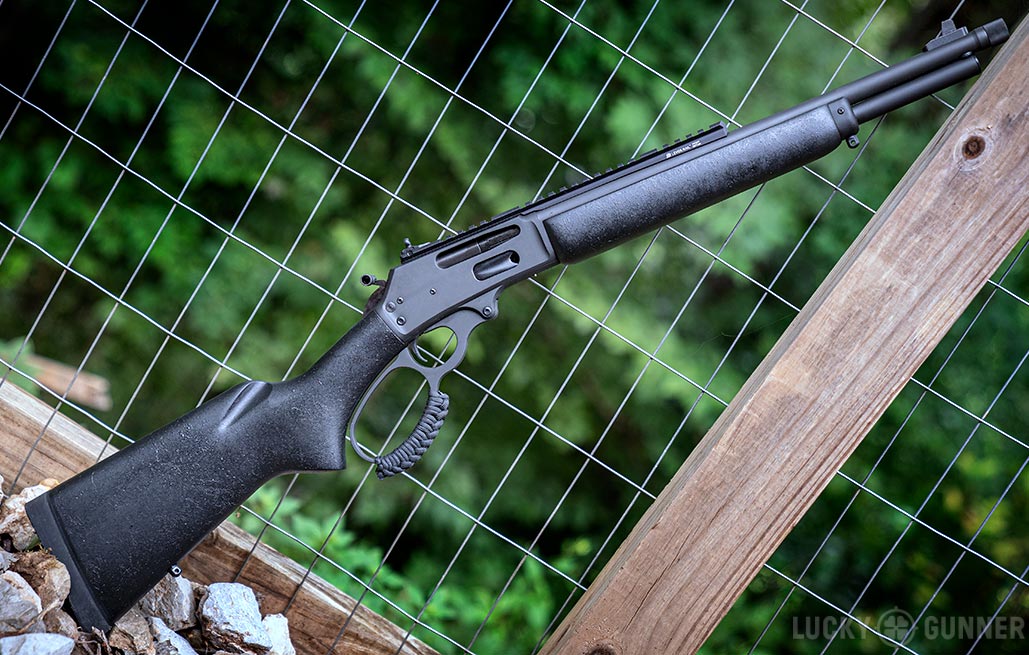
This is a big deal because threading the barrel on your lever action is not as simple as it is for a lot of other rifles. Most lever actions have a magazine tube that runs the full length of the barrel. So if your gunsmith threads the muzzle, they also have to cut back the magazine tube to leave room for whatever you’re going to attach to the barrel. The cost of having that done properly can add up really fast, so it’s nice to see the threaded muzzle as an option you can get right out of the box.
Earlier this year, Henry launched their X Model rifles. These come with a side loading gate on the receiver. That’s something most of today’s lever actions have, but until last year, all of Henry’s rifles could only be loaded through the end of the magazine tube.
The X Models also have a threaded muzzle and lightweight synthetic furniture. And the really cool thing is the forend. It’s got a little section of rail on the bottom and a couple of subtle M-LOK slots on the sides. That means you have three places you can mount a light to the gun. That’s usually is not very easy to do with lever actions.
What Do You Want To See?
I will be doing a detailed review of these guns and a couple of others later on in our lever action series. Be sure to let me know in the comments if there are any specific lever action topics you want me to cover. I’m going to be looking at the good, the bad, and the ugly. But mostly I want this series to be a celebration of lever action rifles. Practically speaking, I have other guns that can do just about everything this gun can and most of them do it better. But lever actions transcend the practical. This is about having fun, so… let’s have some fun.
